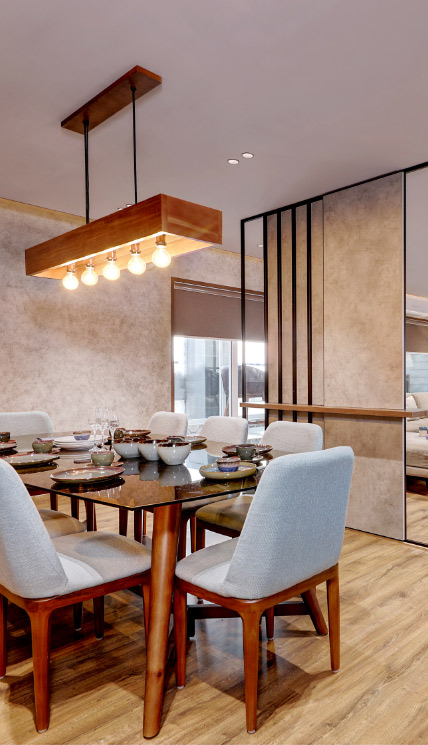Explore luxury interior design for an elegant touch.
Explore luxury interior design for an elegant touch.
Blog Article
Transform Your Home With Vital Concepts of Inside Layout and Aesthetic Appeals
By comprehending the influence of shade theory and the relevance of appearance and patterns, one can produce spaces that are not just aesthetically appealing yet additionally deeply individual. Attaining this stability involves more than plain decor; it incorporates a critical arrangement and an eager understanding of just how each component communicates within an area.
Recognizing Shade Theory
Understanding the principles of color theory permits developers to create areas that reverberate psychologically with passengers while fulfilling functional needs. Each classification plays a critical duty in developing consistency within an area.
The emotional influence of shades is extensive; cozy tones such as reds and oranges stimulate energy and heat, while cool tones like blues and environment-friendlies advertise peace and harmony. Additionally, the usage of corresponding colors enhances aesthetic passion, creating striking contrasts that can elevate a space's appeal.
Neutral colors, on the various other hand, act as a versatile backdrop, enabling various other layout components to shine. It is vital to consider variables such as illumination and the space's function when picking a shade palette, as these can modify the assumption of shades throughout the day.
Inevitably, a well-considered color pattern can transform an area, fostering a sense of comfort and style that aligns with the citizens' choices. Proficiency of color theory is, consequently, a vital skill for any kind of interior developer intending to create harmonious and inviting environments.
Accomplishing Balance in Style
How can designers attain a sense of equilibrium in their spaces? Accomplishing equilibrium in design is basic to creating unified insides.
Asymmetrical balance, on the other hand, depends on varying elements that still accomplish a cohesive look. This strategy permits even more dynamic and informal plans, providing passion while preserving stability. By meticulously selecting differing dimensions, colors, and textures, developers can create an aesthetically engaging space that really feels well balanced yet energetic.
Radial balance highlights a central centerpiece with components radiating outside. This design is typically seen in round designs, where furniture and style create a natural border that attracts the eye internal.
Inevitably, attaining balance needs thoughtful factor to consider of scale, proportion, and the partnerships between components. miami interior design. By masterfully applying these balance principles, designers can change spaces into settings that feel both aesthetically pleasing and functionally harmonious, boosting the overall experience for passengers
Relevance of Spatial Understanding

A keen sense of spatial understanding permits developers to recognize centerpieces within an area, guiding the audience's focus to key features while keeping an overall sense of unity. It additionally helps in the strategic placement of lights, which can substantially influence the perception of area and mood. In addition, recognizing spatial connections enables the developer to deal with the certain demands of residents, making certain that each location offers its intended function without compromising looks.
Ultimately, spatial awareness is critical for making best use of the potential of any type of indoor area. By carefully thinking about the interplay in between dimensions, format, and function, designers can create settings that not only fulfill practical demands but additionally evoke a sense of comfort and appeal, boosting the total living experience.
Incorporating Texture and Patterns
Accepting a varied series of structures and patterns can significantly enhance the visual and tactile appeal of an interior area. The strategic usage of different products-- such as timber, metal, textile, and stone-- produces depth and passion, making a room feel more inviting and vibrant. Combining smooth surface areas with rough textures find more can establish a balance that attracts the eye and engages the senses.
When incorporating patterns, take into consideration both range and rep. Big patterns can offer as focal factors, while smaller, refined styles can match various other aspects without overwhelming the room. Layering patterns, such as pairing floral cushions with striped tosses, adds complexity and a feeling of harmony if implemented thoughtfully.
It is also critical to maintain a natural shade scheme, guaranteeing that appearances and patterns collaborate these details instead of complete for focus. By choosing a few essential structures and patterns, you can produce a combined visual that shows your personal design while enhancing the overall ambiance of the room. Eventually, the careful consolidation of these elements can transform a mundane space right into an advanced atmosphere rich with personality and warmth.
Personalizing Your Room
Producing a space that mirrors your character is important to attaining a genuinely inviting setting. Customization in interior layout enables you to instill your special style and passions into your home, changing it from a simple sanctuary into a sanctuary that talks to who you are. Begin by picking a color palette that resonates with your feelings-- strong hues can stimulate, while soft tones use serenity.
Include artwork and style that reflect your interests, whether it be travel, nature, or abstract principles. Displaying individual collections, such as publications, photos, or keepsakes, can evoke treasured memories and develop prime focus within an area. Additionally, think about customizing practical items, like upholstered furniture, to line up with your visual choices.

Verdict
Finally, the change of a home via the important principles of get more indoor layout and looks demands a comprehensive understanding of color theory, equilibrium, spatial recognition, appearance, and personalization. Each element contributes dramatically to developing an unified and functional living environment - luxury interior design. By thoughtfully integrating these principles, individuals can improve the visual charm and emotional resonance of their spaces, eventually promoting a home that shows distinct identities while offering comfort and functionality
Report this page